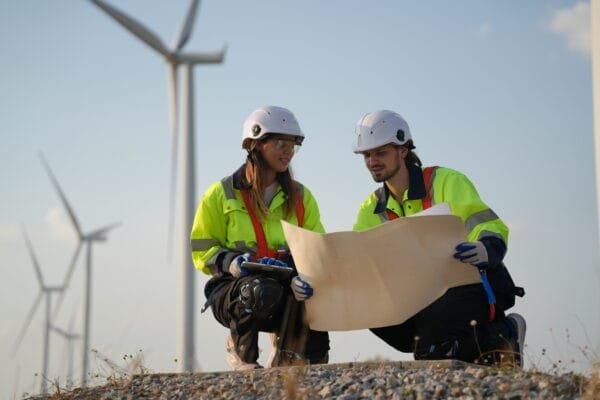Understanding Natural Resources: Importance, Types, and Sustainable Management

Introduction to Natural Resources
Natural resources are the raw materials and components found in nature that are essential for the survival of living organisms and the functioning of ecosystems. These resources, such as water, minerals, forests, and fossil fuels, form the foundation of human civilization and economic development. Natural resources are vital for producing food, generating energy, manufacturing goods, and providing ecosystem services like clean air and water. Understanding the significance of natural resources and the need for their sustainable management is crucial for ensuring the well-being of current and future generations.
Types of Natural Resources
Natural resources can be broadly categorized into three main types based on their availability and renewability:
- Renewable Resources: These are resources that can be replenished naturally over time, such as solar energy, wind energy, water, and biomass. Renewable resources are considered sustainable because they can be used without depleting their availability for future generations. However, their sustainability depends on the rate at which they are used and managed.
- Non-Renewable Resources: Non-renewable resources are finite and cannot be replenished once they are exhausted. Examples include fossil fuels like coal, oil, and natural gas, as well as minerals and metals. The extraction and consumption of non-renewable resources often lead to environmental degradation and contribute to climate change.
- Inexhaustible Resources: These are resources that are virtually limitless and not affected by human consumption. Sunlight, air, and geothermal energy fall into this category. Inexhaustible resources play a crucial role in supporting life on Earth and providing sustainable energy solutions.

The Role of Natural Resources in Economic Development
Natural resources are a cornerstone of economic development, providing the raw materials needed for industrialization, energy production, and agriculture. Countries rich in natural resources often experience significant economic growth, especially when these resources are effectively managed and exported. For example, nations like Saudi Arabia and Russia have built their economies around oil and natural gas exports, while others like Brazil and Canada benefit from their vast forests and mineral wealth.
However, reliance on natural resources can also pose challenges, such as vulnerability to price fluctuations in global markets and the risk of over-dependence on a single resource. Diversifying the economy and investing in sustainable practices are essential for resource-rich countries to ensure long-term prosperity and avoid the “resource curse,” where abundant resources lead to economic instability and conflict.
Environmental Impact of Natural Resource Extraction
The extraction and use of natural resources, particularly non-renewable ones, can have significant environmental impacts. Mining, deforestation, and fossil fuel extraction often lead to habitat destruction, soil erosion, water pollution, and loss of biodiversity. For example, the extraction of minerals and metals can result in the removal of vast areas of vegetation, disrupting ecosystems and displacing wildlife. Deforestation, driven by logging and agricultural expansion, contributes to climate change by releasing stored carbon into the atmosphere and reducing the planet’s capacity to absorb carbon dioxide.
Fossil fuel extraction, such as oil drilling and coal mining, not only depletes finite resources but also causes pollution and contributes to global warming. The burning of fossil fuels is the primary source of greenhouse gas emissions, which are responsible for the majority of human-induced climate change. Additionally, oil spills and mining accidents can cause long-lasting damage to marine and terrestrial ecosystems, with severe consequences for local communities and wildlife.

Sustainable Management of Natural Resources
Sustainable management of natural resources is essential to balance economic growth with environmental protection. This approach involves using resources in a way that meets the needs of the present without compromising the ability of future generations to meet their own needs. Sustainable resource management practices include:
- Forestry: Sustainable forestry practices involve managing forest resources to prevent over-exploitation, protect biodiversity, and maintain the ecological functions of forests. This includes practices such as selective logging, reforestation, and maintaining buffer zones around sensitive areas.
- Fisheries: Sustainable fishing practices aim to prevent overfishing, protect marine habitats, and ensure that fish populations remain healthy. This can be achieved through measures such as setting catch limits, protecting spawning areas, and reducing bycatch.
- Agriculture: Sustainable agriculture focuses on practices that preserve soil health, reduce water use, and minimize chemical inputs. Techniques such as crop rotation, organic farming, and agroforestry help maintain the productivity of agricultural lands while protecting the environment.
Implementing sustainable management practices is critical for conserving natural resources, supporting biodiversity, and mitigating the impacts of climate change.
Challenges in Managing Natural Resources
Managing natural resources sustainably presents several challenges, particularly as global demand for these resources continues to grow. One of the primary challenges is over-exploitation, where resources are used at a faster rate than they can be replenished. This is particularly concerning for non-renewable resources, such as fossil fuels and certain minerals, where depletion is inevitable if consumption continues unchecked.
Climate change is another significant challenge, as it impacts the availability and distribution of natural resources. For example, changes in temperature and precipitation patterns can affect water supplies, agricultural productivity, and forest health. Additionally, rising sea levels and more frequent extreme weather events pose threats to coastal and marine resources.
Conflicts over resource control and access also pose challenges, particularly in regions where resources are scarce or where multiple parties have competing interests. These conflicts can lead to social and political instability, making sustainable management even more difficult. Addressing these challenges requires international cooperation, effective governance, and the adoption of innovative technologies and practices.

The Future of Natural Resources
The future of natural resources will be shaped by several key trends and developments. One of the most significant trends is the global shift towards renewable energy sources. As the world grapples with the impacts of climate change, there is increasing emphasis on reducing reliance on fossil fuels and transitioning to cleaner, renewable energy sources such as solar, wind, and hydroelectric power. This transition not only helps mitigate the environmental impacts of energy production but also ensures a more sustainable and resilient energy supply for the future.
Technology will also play a crucial role in the future management of natural resources. Advances in technology are enabling more efficient use of resources, reducing waste, and minimizing environmental impacts. For example, precision agriculture uses data and technology to optimize crop yields while minimizing inputs such as water and fertilizers. In the mining sector, new technologies are being developed to reduce the environmental footprint of extraction and improve resource recovery rates.
Global efforts towards conservation and sustainable use of natural resources are also expected to intensify. International agreements, such as the Paris Agreement on climate change and the Convention on Biological Diversity, are driving coordinated actions to protect natural resources and promote sustainable development. As these efforts gain momentum, they will help ensure that natural resources are managed in a way that balances economic growth with environmental stewardship.
Natural Resources and Global Trade
Natural resources are a driving force behind global trade, with many countries relying on the export of raw materials to fuel their economies. Commodities such as oil, natural gas, minerals, and agricultural products are among the most traded goods globally, and fluctuations in their prices can have significant impacts on international markets and economies. Resource-rich countries often have a comparative advantage in global trade, enabling them to specialize in the production and export of certain goods.
However, the reliance on natural resources for trade also comes with challenges. Resource scarcity, geopolitical tensions, and environmental concerns can disrupt supply chains and lead to volatility in global markets. Additionally, countries that are heavily dependent on resource exports may face economic challenges if demand for these resources declines or if prices drop significantly. Diversifying economies and investing in value-added industries are strategies that can help resource-rich countries mitigate these risks and build more resilient economies.

Case Studies of Natural Resource Management
There are numerous examples around the world of both successful and unsuccessful natural resource management practices. One successful case is Costa Rica’s approach to forest conservation. The country has implemented policies that incentivize reforestation, protect biodiversity, and promote sustainable land use. As a result, Costa Rica has seen a significant increase in forest cover, while also boosting its economy through eco-tourism and sustainable agriculture.
On the other hand, the over-exploitation of natural resources in the Aral Sea region offers a cautionary tale. Once one of the world’s largest lakes, the Aral Sea has been severely depleted due to the diversion of rivers for irrigation purposes. This has led to environmental degradation, loss of biodiversity, and economic decline in the surrounding areas. The case of the Aral Sea highlights the importance of sustainable water management and the long-term consequences of unsustainable resource use.
These case studies underscore the need for careful planning, strong governance, and community involvement in the management of natural resources. By learning from both successes and failures, countries can develop strategies that promote sustainable resource use while supporting economic development and environmental protection.
The Role of Governments and Policies in Natural Resource Management
Governments play a crucial role in the sustainable management of natural resources through the development and enforcement of policies and regulations. Effective governance ensures that resources are used responsibly, benefits are equitably distributed, and environmental impacts are minimized. National policies often include regulations on land use, water rights, and environmental protection, as well as incentives for sustainable practices in industries such as agriculture, forestry, and mining.
International agreements and treaties also play a significant role in natural resource management. For instance, the Paris Agreement on climate change encourages countries to reduce their carbon emissions and transition to renewable energy sources, while the Convention on Biological Diversity aims to protect ecosystems and promote sustainable development globally. These agreements foster international cooperation and provide a framework for countries to work together in managing shared resources, such as oceans and transboundary rivers.
In addition to policy measures, governments can promote sustainable resource management by investing in education, research, and technology. By supporting the development of new technologies and practices, governments can help industries reduce their environmental footprint and improve resource efficiency. Public awareness campaigns and community engagement are also important for encouraging sustainable behaviors and ensuring that resource management efforts are supported at all levels of society.

FAQs About Natural Resources
Natural resources are a complex and multifaceted topic, leading to many questions from those interested in sustainability and environmental protection. Here are some common questions:
What is the difference between renewable and non-renewable resources?
Renewable resources are those that can be replenished naturally over time, such as solar energy, wind energy, and biomass. Non-renewable resources, such as fossil fuels and minerals, are finite and cannot be replaced once they are exhausted. The sustainability of renewable resources depends on how they are managed, while non-renewable resources require careful management to avoid depletion.
How does climate change affect natural resources?
Climate change impacts natural resources in several ways. Changes in temperature and precipitation patterns can affect water availability, agricultural productivity, and forest health. Rising sea levels and more frequent extreme weather events can also threaten coastal and marine resources. Managing natural resources in the face of climate change requires adaptive strategies and resilience-building measures to ensure their long-term sustainability.
What can individuals do to conserve natural resources?
Individuals can play a significant role in conserving natural resources by adopting sustainable practices in their daily lives. This includes reducing energy and water consumption, recycling and reusing materials, supporting sustainable products, and advocating for environmental protection. Simple actions like using energy-efficient appliances, reducing waste, and conserving water can collectively make a big difference in preserving natural resources for future generations.
Why are some countries rich in natural resources but poor in economic development?
Countries rich in natural resources may struggle with economic development due to factors such as poor governance, corruption, lack of infrastructure, and over-reliance on a single resource. This phenomenon, known as the “resource curse,” can lead to economic instability and social inequality. Diversifying the economy, improving governance, and investing in human capital are essential strategies for resource-rich countries to achieve sustainable economic development.
How does technology help in the sustainable management of natural resources?
Technology plays a critical role in the sustainable management of natural resources by enabling more efficient use, reducing waste, and minimizing environmental impacts. For example, precision agriculture uses technology to optimize crop yields while conserving water and soil health. In the energy sector, advancements in renewable energy technologies are helping to reduce reliance on fossil fuels and promote cleaner, more sustainable energy production. Continued innovation in technology is essential for addressing the challenges of resource management and supporting sustainable development.

Conclusion
Natural resources are the foundation of life on Earth and the cornerstone of economic development. However, the increasing demand for these resources, coupled with environmental challenges such as climate change, highlights the need for sustainable management practices. By understanding the types and importance of natural resources, adopting sustainable practices, and supporting effective governance, we can ensure that these vital resources are preserved for future generations. The future of our planet depends on the choices we make today, and sustainable management of natural resources is key to a thriving, balanced, and resilient world.
5 FAQs After the Conclusion
1. What are the most critical natural resources for human survival?
Water, air, and fertile soil are among the most critical natural resources for human survival. These resources are essential for drinking, agriculture, and maintaining healthy ecosystems. Protecting and sustainably managing these resources is crucial for ensuring the continued well-being of humanity.
2. How do natural resource exports affect a country’s economy?
Natural resource exports can significantly boost a country’s economy by generating revenue, creating jobs, and attracting foreign investment. However, over-reliance on resource exports can make the economy vulnerable to price fluctuations and external shocks. Diversifying the economy and investing in other sectors are important strategies to mitigate these risks.
3. What role do indigenous communities play in natural resource management?
Indigenous communities often have deep knowledge of local ecosystems and sustainable resource management practices. Their involvement in resource management is crucial for protecting biodiversity, preserving traditional practices, and ensuring that development projects respect the rights and territories of indigenous peoples.
4. How can businesses contribute to sustainable natural resource management?
Businesses can contribute to sustainable natural resource management by adopting environmentally friendly practices, reducing waste, using resources efficiently, and investing in sustainable technologies. Corporate social responsibility (CSR) initiatives can also support conservation efforts and promote sustainable development in communities where businesses operate.
5. What is the role of education in promoting sustainable resource management?
Education plays a vital role in promoting sustainable resource management by raising awareness of environmental issues, teaching sustainable practices, and empowering individuals to make informed decisions. Environmental education in schools, community programs, and public awareness campaigns are essential for fostering a culture of sustainability and stewardship of natural resources.




